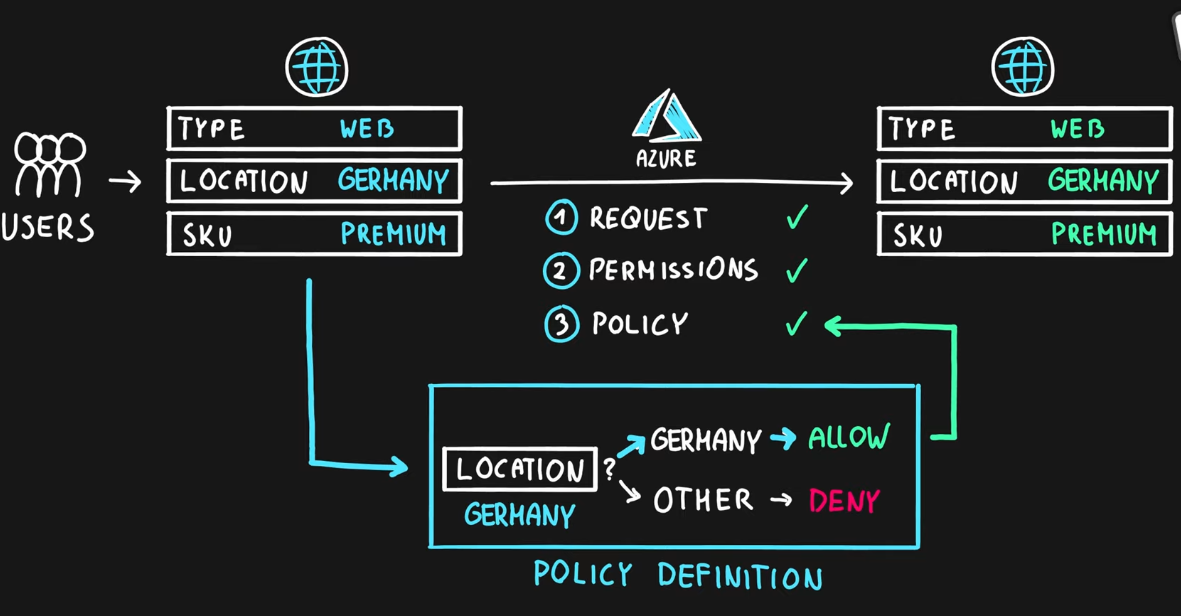Policies allow to make decisions based on the properties of a resource
A policy can be created on (almost) all properties of any given resource
The properties of the resources are exposed as aliases
A rule can be written around the policy to make a decision (cause a effect) based on the value received of the property defined in the policy
A policy is an single rule
Multiple policies can be grouped together into an Initiative which allows for easier assignment and enforcement of the policies
Policies are enforced at the Fabric level and cannot be bypassed by any method (though its possible to exclude resources from policies)

Policy can be assigned to any scope: Management group, Subscription, Resource Group, Resource
Azure policies are inherited
Policies do not check for user permissions (It is checked in a previous step)
Policies are checked during the deployment of an resource
Policies are only applied to Resources that are newly created or modified. For applying to older resources the remediation option can be used
GitHub Actions have Actions that allow to apply Azure Policies as well as Scan for Compliance
DevOps has built-in support for policies via Gates which can be enabled Pre or Post Deployment
Policy Effects
- Deny: Fail deployment
- Audit: Allow deployment but raise exception
- Append, Modify: Modify the policy before the deployment happens
Azure Policy for Kubernetes
For AKS Policies need to be explicitly enabled (Onboarding for Kubernetes Service)
Once enabled services like Azure Defender can use the metrics from AKS to provide recommendations for compliance
Regulatory compliance policies (GDPR, HIPAA, etc.) for AKS can be found in Security Center
Policy Best Particles
- Map Azure Policies to the written policies of the organization
- Use Audit before using Enforce & Remediate
- Broad policies at higher level and tighter as we go down the hierarchy
- Have people responsible for tracking the compliance
- Use good names and descriptions